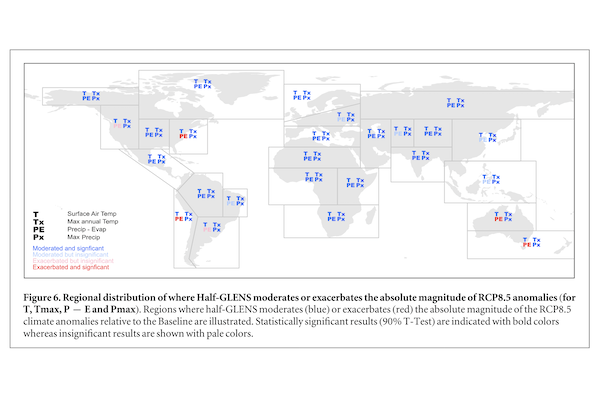
Physics, atmospheric science, and miscellaneous
This section covers publications from experimental physics, where I began my academic career, as well as my work in climate and atmospheric science outside geoengineering.
Physics. I started graduate school in physics at MIT in 1986 as a student of David Prichard, who gave me the project of building an interferometer for atoms.
Interferometry using light dates to the 19th century, when Albert Michelson invented the device known as the Michelson interferometer. Light interferometers work by splitting light into two paths and then recombining them at a detector. The interference pattern created when the two waves converge provides information about the different distances they’ve traveled. By minutely controlling the path lengths of the light waves and other factors, it’s possible to use interferometers to detect very small changes in distance.
Experimental physics, particularly in a lab like Pritchard’s, requires hands-on skills. This project was a fun ride and an amazing opportunity to build hardware. Highlights included building an analog feedback control system to dampen the vibration-induced movement of the atom interferometer’s three platforms and working at Cornell University’s National Nanofabrication Facility to make period freestanding wire gratings with a 0.2-micron spacing between wires that were used to split the beam of atoms into two paths. Lowlights included seemingly endless days of vacuum system maintenance—and not a few late nights soldering copper sweat fittings.
Building that first atom interferometer was a significant accomplishment. It was covered by news stories in Science and Nature and named one of the 10 “hottest” areas of science by the Institute for Scientific Information (ISI). But our hot atom/small grating technique for building an atom interferometer is now dated. Today’s atom interferometers make even more precise measurements by using ultra-cold atoms—another innovation linked to Pritchard’s group.
Recently I have been pulled back to physics by my student Ben Schaefer and collaborators who are developing photophoretically levitated structures. They can generate enough thrust to lift themselves and, we hope, carry a small payload when light absorption creates a temperature gradient within the structure that drives gas flow.
Atmospheric science. My first real work in atmospheric science, as a postdoc with Phil Rasch at the National Center for Atmospheric Research (NCAR) in 1992, was a study of meridional heat transport—the movement of heat from the equator towards the poles. I assessed the uncertainty in meridional heat transport by comparing the sum of atmospheric transport (estimated from an early reanalysis dataset) and a point estimate of oceanic heat transport with total heat transport derived from satellite measurements of the earth’s radiation budget.
In 1994, I moved to James Anderson’s group in Harvard’s Department of Earth and Planetary Science. My main task there was building a new high-accuracy infrared spectrometer for measuring temperatures in space. Space-based measurement of atmospheric temperatures had absolute accuracies of only about ±1 C—fine for weather forecasting but insufficient for monitoring climate long-term.
Our goal was to put our high-accuracy, low signal-to-noise infrared spectrometer in a small satellite, to complement the high signal-to-noise but low accuracy instruments developed for weather forecasting. Our instrument flew aboard the NASA ER-2 high-altitude aircraft, an effort involving more than a dozen scientific and technical personnel along with NASA pilots and engineers. Although the satellite never flew, I gained experience in aerospace and project management; and our spectrometer encouraged improvements in the accuracy of space-based radiometers.
While with the Anderson group, I also worked on stratosphere-troposphere exchange, particularly the globally important movement of water vapor from the tropical lower atmosphere (the troposphere) into the overlying stratosphere. I explored whether satellite measurements of water vapor’s isotopic composition could reveal how water moved into the stratosphere, and I estimated the size of the climate feedback that occurs as a warming world increases the flux of water vapor into the stratosphere.
Starting while I was at CMU in the early 00’s, I led a collaboration with NCAR, Princeton, and GFDL in the first study of the climatic impacts of large-scale wind power using global climate models. This led to work with Amanda Adams to develop wind turbine parameterizations that are now part of standard modelling tools such as NCAR’s WRF model. I returned to the topic about a decade later, while at Harvard working with Lee Miller. That work involved observational estimates of areal wind power density and the first study to quantitatively compare warming at windfarms observed using satellite data and model-based estimates of such warming.

The influence of large-scale wind-power on global climate
Workshop on Climate Effects of Wind Turbines, American Meteorological Society
Accurate Spectrally Resolved Infrared Radiance Observation from Space: Implications for the Detection of Decade-to-Century-Scale Climatic Change